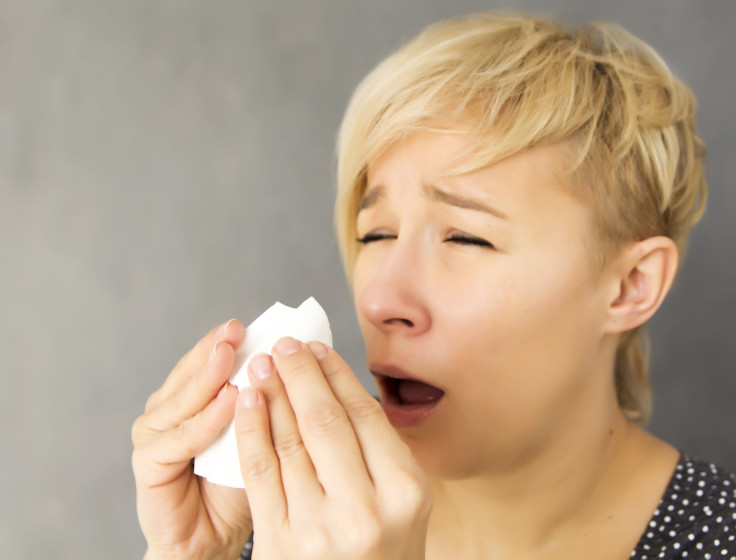Infectious Droplets From Coughs And Sneezes Travel Much Farther Than Previously Believed; Germs Spread By ‘Gas Clouds'

Casually covering a sneeze with your hand may not really stop the germs from spreading.
A new study conducted by researchers at Massachussetts Institute of Technology (MIT) found that coughs and sneezes actually have “gas clouds,” also dubbed “multiphase turbulent buoyant clouds,” that spread infectious droplets out much farther than previously believed.
Suspended in a gas cloud, droplets from a cough or sneeze billow farther out as opposed to staying in one enclosed area, near the sneezing person’s mouth. It’s similar to smoke emerging from a smokestack, the researchers note.
“When you cough or sneeze, you see the droplets, or feel them if someone sneezes on you,” John Bush, a professor of applied mathematics at MIT and a co-author of the study, said in a press release. “But you don’t see the cloud, the invisible gas phase. The influence of this gas cloud is to extend the range of the individual droplets, particularly the small ones.”
The study found smaller droplets that are produced by sneezes or coughs can actually travel 5 to 200 times further than if they moved as “groups of unconnected particles,” which researchers had previously assumed. These so-called gas clouds are able to keep smaller particles suspended in the air, and more likely to float around rather than get caught behind your hand.
In the study, researchers used high-speed imaging to capture droplets and gas clouds of coughs and sneezes. They paired that with laboratory stimulations and mathematical modeling to better analyze how these droplets move after being projected into the air. They will now continue research in order to better understand how the pathogens being carried by the droplets move — and where exactly they go.
“The cloud entrains ambient air into it and continues to grow and mix,” Lydia Bourouiba, assistant professor at the Department of Civil and Environmental Engineering and a co-author of the study, said in the press release. “But as the cloud grows, it slows down, and so is less able to suspend the droplets within it. You thus cannot model this as isolated droplets moving ballistically.”
The authors conclude that contamination in the air is possible in a much more direct route than previously assumed. Who knew that examining fluid-mechanics was so important in analyzing a sneeze.



























